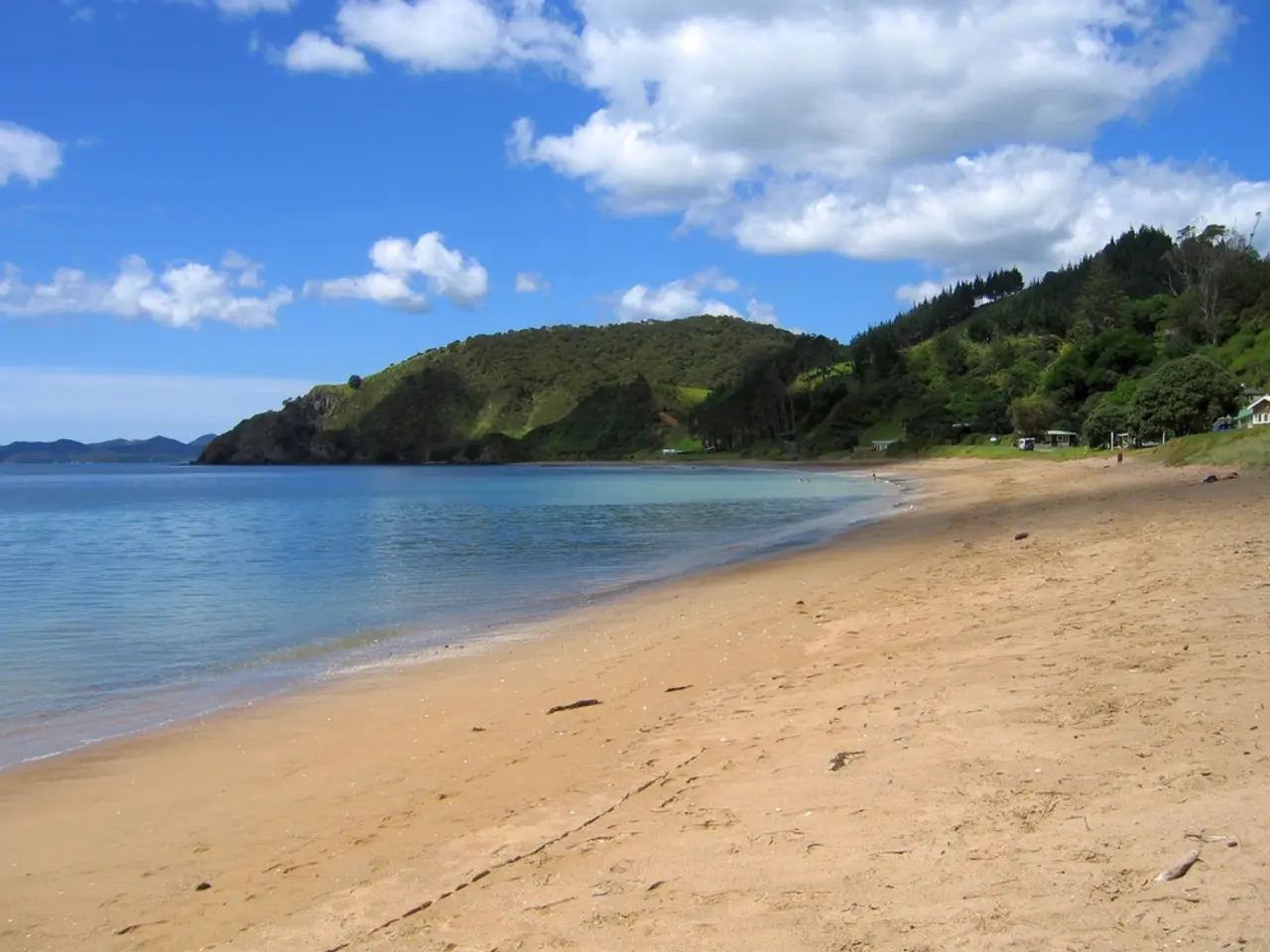Emerged after 40 million years submerged in the Atlantic, an island rises, sparking a move by this nation to lay claim to it.
In the depths of the South Atlantic seabed lies a fascinating discovery that is turning heads: the submerged remains of a tropical island, now known as the Rio Grande Rise. This ancient landmass, which once stood above sea level over 40 million years ago, has significant geopolitical implications, particularly regarding territorial claims and mineral resource exploitation.
The geologists from the University of São Paulo and the National Oceanography Centre made the discovery during a deep-sea mission. They uncovered unusual bands of red clay on the seafloor, rich in minerals like kaolinite, hematite, and goethite. These minerals, formed by intense tropical weathering and volcanic activity, could be associated with economically valuable deposits such as iron ores and other metals.
Brazil, with its strategic interest in the region, has already formally sought to extend its maritime jurisdiction over the Rio Grande Rise. If successful, the country would claim sovereign rights over the seabed, particularly the vast mineral reserves embedded within it. This could enhance Brazil’s geopolitical influence in the South Atlantic, providing control over shipping lanes, scientific research dominance, and military strategic advantage in this historically less explored but increasingly important oceanic region.
However, the discovery comes with challenges. Deep-sea ecosystems are still poorly understood, and scientists caution that resource extraction could harm these fragile environments. As nations eye resource exploitation, geopolitical tensions could arise between economic interests and environmental protection efforts.
Moreover, the Rio Grande Rise is currently under the jurisdiction of the International Seabed Authority (ISA), which requires extensive environmental impact studies before approving any seabed mining operation. Brazil must prove that the Rio Grande Rise is a natural extension of its continental shelf to secure territorial rights.
The red clay's Chemical Index of Alteration (CIA) was measured at 93, indicating "extreme chemical weathering." The presence of foraminifera, volcanic ash, and marine sediment atop the red clay indicates its final burial under the sea, dating from the late Eocene to early Oligocene. The area is believed to be rich in tellurium, nickel, cobalt, and especially lithium-minerals critical for building batteries and other green energy technologies.
The world is transitioning towards electric vehicles and renewable energy infrastructure, increasing the demand for these minerals. The Rio Grande Rise offers scientists an unprecedented look at Earth’s climatic and tectonic past, making it a valuable resource for understanding our planet’s history.
In conclusion, the Rio Grande Rise discovery thrusts the South Atlantic seabed into a new geopolitical spotlight. Brazil's claims could reshape regional maritime boundaries and resource governance, potentially affecting international relations and environmental policies in the coming years. As the world moves towards a greener future, the race for these critical minerals may intensify, highlighting the need for careful and sustainable resource management.
- The geopolitical implications of the Rio Grande Rise discovery are vast, including territorial claims and mineral resource exploitation.
- The submerged tropical island once stood above sea level over 40 million years ago.
- The geologists who made the discovery uncovered unusual bands of red clay on the seafloor, rich in minerals.
- These minerals, like kaolinite, hematite, and goethite, could be associated with economically valuable deposits such as iron ores and other metals.
- Brazil has already sought to extend its maritime jurisdiction over the Rio Grande Rise.
- If successful, Brazil would claim sovereign rights over the seabed, including the vast mineral reserves embedded within it.
- This could enhance Brazil’s geopolitical influence in the South Atlantic.
- Control over shipping lanes, scientific research dominance, and military strategic advantage are potential benefits.
- However, resource extraction could harm deep-sea ecosystems, which are still poorly understood.
- Scientists caution that geopolitical tensions could arise between economic interests and environmental protection efforts.
- The Rio Grande Rise is currently under the jurisdiction of the International Seabed Authority (ISA).
- The ISA requires extensive environmental impact studies before approving any seabed mining operation.
- The red clay's Chemical Index of Alteration (CIA) was measured at 93, indicating "extreme chemical weathering."
- The presence of foraminifera, volcanic ash, and marine sediment atop the red clay indicates its final burial under the sea.
- The area is believed to be rich in tellurium, nickel, cobalt, and especially lithium-minerals.
- These minerals are critical for building batteries and other green energy technologies.
- The world is transitioning towards electric vehicles and renewable energy infrastructure, increasing the demand for these minerals.
- The Rio Grande Rise offers scientists an unprecedented look at Earth’s climatic and tectonic past.
- As the world moves towards a greener future, the race for these critical minerals may intensify.
- This highlights the need for careful and sustainable resource management.
- The discovery thrusts the South Atlantic seabed into a new geopolitical spotlight.
- The Rio Grande Rise discovery could reshape regional maritime boundaries and resource governance, potentially affecting international relations and environmental policies in the coming years.





